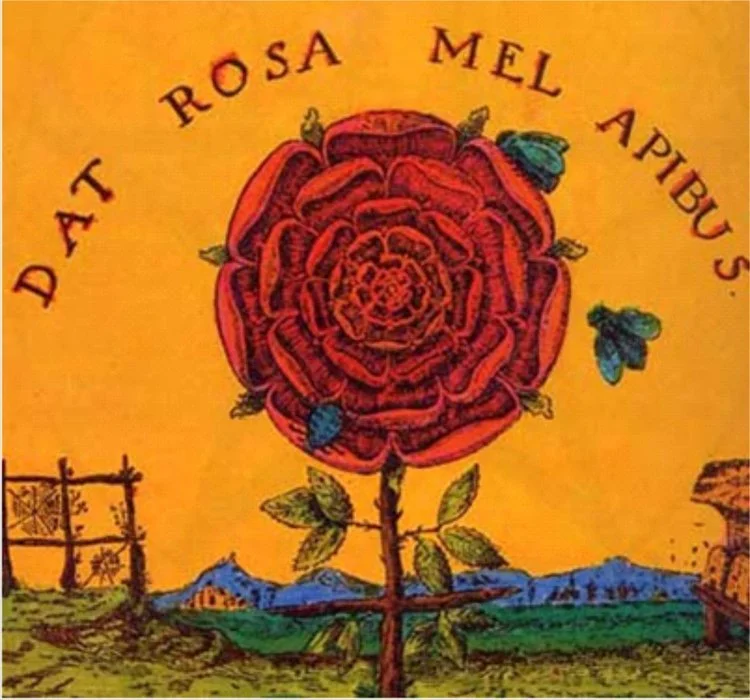After a very hot July, it’s nice to have August be a bit more seasonable. It hasn’t been cool here by any definition of that word, but the weather has cooled off compared to the last few weeks. This year again the slight cooling is on time as yesterday, Tuesday August 8th, was the the beginning of Autumn (and the seasonal node of that same name) in the traditional calendar.
Although in the modern western world August is a summer month, the Chinese calendar is concerned with the relative balance of Yin and Yang in the natural environment over temperature as a marker of the seasons; this is closely tied to day length. Summer Solstice in June was the longest day of the year. By now the days are getting gradually shorter, and we are only 6 weeks away from the Autumnal Equinox, a day of balanced light and dark. Therefore, even though August weather can still be hot we are in the time of growing Yin and contraction in the natural environment.
In the Lü Shi Chun Qiu (The Spring and Autumn Annals of Lü Bowei; 呂氏春秋), the classic text of Chinese philosophy from the 3rd century BCE, it is said that the Emperor Shao Hao (少昊), and his son Ru Shou (蓐收) are the sovereigns associated with the three months of Autumn. This obscure statement sheds tremendous light on the essence of Autumn, and eventually allows us to understand how to stay healthy this season.
According to some legends (since they do vary), Shao Hao was one of the Five Emperors (五帝) of ancient China. His mother was a weaver goddess who fell in love with the planet Venus, and the result of that union was Shao Hao. Together with his son Ru Shou, Shao Hao settled on Chang Liu Mountain where they ruled over the Western Heavens and controlled the setting of the sun. Remember, the west is associated with the Metal phase, and therefore Autumn. Certainly, Autumn is the time of year that corresponds to sunset during the day, and in Chinese astrology Venus is the planet of the Metal phase, and thus too corresponds with Autumn. Even the son’s name, Ru Shou, has the word “shou” (收) within – the word meaning “to harvest” or “to collect,” an attribute of Autumn. The Neijing says that when we move and behave in a way that allows us to resonate with Autumn, we are in the state of Nourishing the movement of Harvest (養收).
In early Autumn (August is the first month of the season) we experience the ongoing but very gradual shift to shorter days and, eventually, cooler temperatures. In other words, we are shifting more and more to the Yin phase of the year. Yet, August in particular can still be damp and humid. It is also the time of tropical storms which bring moisture and wind – an external event. In Chinese medicine, weakness in the Spleen and Stomach leads to damp accumulation – an internal event. In early Autumn we therefore should avoid dampness externally and simultaneously strengthen the digestive organs internally. One way to accomplish this is to eat light and clear foods, increase the amount of seasonal vegetables, and eat a little less meat. Vegetables can be consumed lightly steamed or stir-fried, or in the case of light salad greens, raw. In general avoid overly hot, spicy foods. Congees are appropriate to help strengthen the digestive organs and one traditional congee recipe for this seasonal node is Euryale Seed and Discorea Congee (Qian Shi Shan Yao Zhou 芡實山藥粥).
Euryale Seed and Discorea Congee 芡實山藥粥
Ingredients:
1 cup rice (use glutinous rice if available)
200g Euryale seed (Qian Shi )
200g Discorea (Shan Yao )
200 g sugar
Directions:
Grind rice, Euryale seed, and Discorea to a powder. Mix the three together with sugar and blend well so evenly mixed
In a pan, add 50 – 100g of blended powder to cold water, enough to make a thick soupy consistency
Put over medium flame and warm for several minutes, stirring occasionally
Enjoy in the morning on an empty stomach (consume warm)
This congee strengthens the Spleen, stops diarrhea. However it is contraindicated for patients with diarrhea due to infections, or with damp heat type diarrhea.
In addition to dietary recommendations we can perform acupressure on supplementing points such as Zu San Li (ST-36). If patients tend to cold and vacuous patterns of the Spleen and Stomach, gentle direct thread moxa at Zu San Li is also applicable. According to the noted moxibustion scholar Lorraine Wilcox, the time around the beginning of Autumn is also a special time for applying prophylactic moxibustion in an effort to strengthen the body for the cold season to come. Those familiar with Tung’s acupuncture can needle the Zu San Tong (足三通) Dao Ma group, consisting of Tong Guan 88.01, Tong Shan 88.02 and Tong Tian 88.03. These points are the main Dao Ma group for Heart, but really they function like Pericardium channel points, which is why they are indicated for Spleen and Stomach problems. Furthermore, in terms of Five Phase theory, supplementing Heart will strengthen Spleen because of the engendering cycle relationship between Fire and Soil-Earth.
Autumn is the season associated with the Lungs, and thus even though we should avoid very spicy foods, mildly acrid foods are good this time of year for Lung function. These foods include ginger, scallion, leek, and black pepper. Mildly sweet and slightly sour fruits also help moisten and benefit the Lungs, including the now in-season stone fruits (i.e., plums and peaches). This recommendation however should be based on individual patient characteristics. For example, if patients have Spleen vacuity with dampness they should avoid overly sour foods.
As August continues through the rest of August and into September and the weather does become cooler, we need to be cautious of sudden returns of very hot and humid weather, a common weather pattern here in New Jersey. In Chinese this is called “The Old Tiger of Autumn” (Qiu Lao Hu 秋老虎). When the old tiger rears its head again Summerheat pathogens are a risk – symptoms of this include headache, dizziness, nausea or vomiting, poor appetite, stuffy chest, heavy or fatigued limbs, and possibly diarrhea. If intense hot and damp weather returns, focus the diet on foods that are cooling and moistening. Foods to consider adding on a daily basis include all sorts of sprouts (e.g., mung bean or alfalfa), cucumbers, muskmelon, winter melon, tomato, and loofah. Mung beans are very cooling, and in hot weather they can be made into a sweet dessert soup. For more serious conditions consider giving patients formulas such as Huo Xiang Zheng Qi San.
Here’s a formula from the Zun Sheng Ba Jian (遵生八箋) – the Eight Treatises on Following the Principles of Life. Written by a scholar by the name of Gao Lian at the end of the Ming Dynasty (1368-1644), the text is an almost encyclopedic collection of all manner of Nourishing Life (養生) recipes, techniques, theories, etc… One of the formulas specifically for Autumn is called Conserve the Spleen Pill (攝脾丸). It treats damage to the Spleen that happens during the Autumn months that leads to abdominal distension and diarrhea. The ingredients listed are Mu Xiang, He Zi, Hou Po (ginger fried), Wu Bei Zi (slightly toasted), and Bai Zhu (earth fried). These ingredients would be ground to a powder and made into pills the size of a Tung Tree seed, and 10 pills would be a daily dose.
I hope everyone is having a great end of Summer and start of Autumn!






















